Join us on a culinary adventure as we explore 27 bold and daring dishes that might make some say “Ew,” but have us proclaiming “Yum!” From savory surprises to sweet sensations, each bite promises to challenge your taste buds and expand your gastronomic horizons. Discover the stories behind these unique delicacies and see why they deserve a place on your foodie bucket list.
Durian
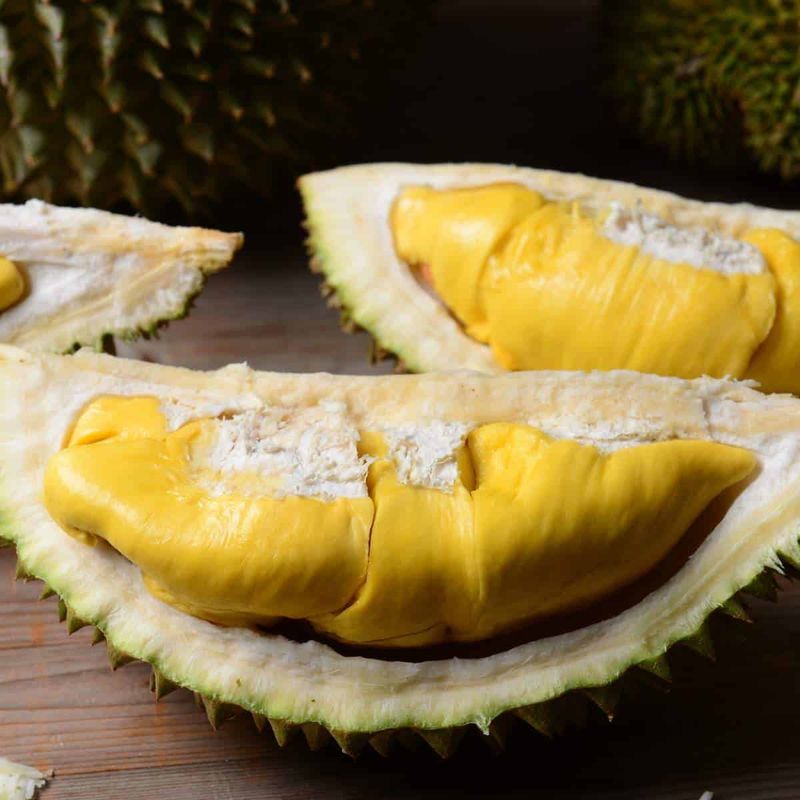
Known as the “king of fruits,” durian is infamous for its pungent aroma that can deter even the most adventurous eaters. However, beneath its thorny exterior lies a creamy, custard-like flesh that many find deliciously sweet.
This tropical fruit, native to Southeast Asia, is a favorite in countries like Thailand, where it’s often enjoyed fresh or in desserts. Some describe the taste as a mix of banana, almond, and garlic.
Despite its divisive scent, durian offers numerous nutrients, including vitamin C and potassium. A must-try for those seeking bold flavors!
Hákarl

Hákarl is a traditional Icelandic dish that challenges the palate with its intense flavors. Made from Greenland shark, it undergoes a fermentation process to break down toxins, resulting in a distinctive taste.
The preparation involves burying the shark in gravelly sand to ferment for several months, followed by drying for another few months. This unique method gives hákarl its characteristic ammonia-rich aroma.
Icelanders often serve it in small cubes, paired with a strong spirit called Brennivín. It’s a bold culinary experience that reflects Iceland’s rugged, adventurous spirit.
Stinky Tofu

Stinky tofu, a beloved street food in Taiwan, is famous for its potent smell. Fermented in a brine of milk, vegetables, and meat, this tofu develops a strong odor that contrasts its mild, savory taste.
Visitors to Taipei often encounter stinky tofu at night markets, where it’s deep-fried until crispy and served with pickled cabbage. Despite its aroma, many find it surprisingly delicious.
This dish is a testament to Taiwan’s rich culinary traditions, offering a taste that’s both unique and unforgettable. An adventure for the senses awaits those who dare to try!
Balut
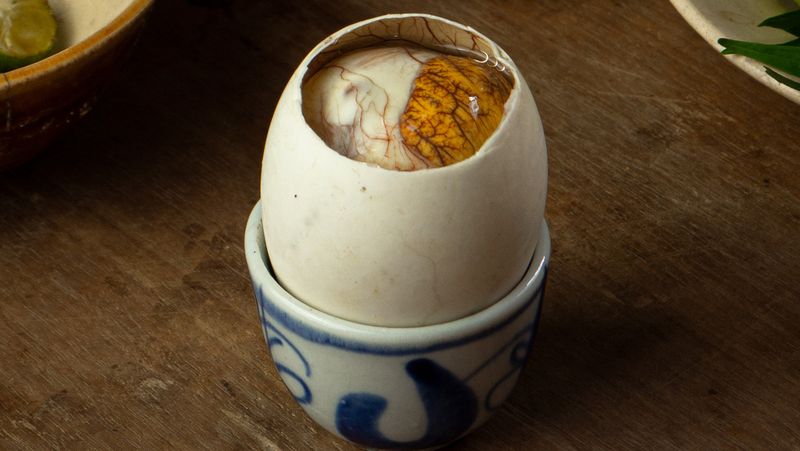
Balut, a fertilized duck egg, is a popular street food in the Philippines. With its unique preparation, it offers an unforgettable taste experience.
The egg is boiled and eaten directly from the shell, revealing a partially developed duck embryo inside. This dish is enjoyed with a pinch of salt or a splash of vinegar.
While it might appear daunting to some, balut is cherished for its rich flavors and high protein content. A beloved delicacy in Filipino culture, it’s an adventurous bite for those seeking to expand their culinary repertoire.
Century Egg
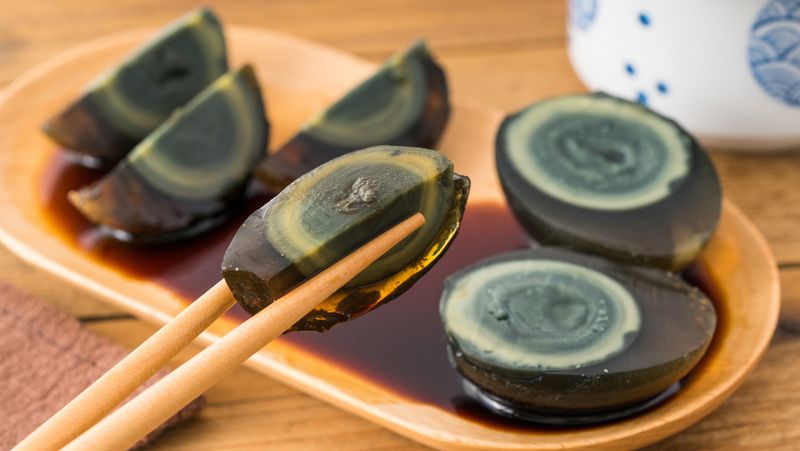
Century eggs, also known as hundred-year eggs, are a traditional Chinese delicacy that intrigues with their unique appearance and taste. These preserved eggs boast a gelatinous, dark-colored exterior and a creamy, pungent yolk.
The preservation process involves coating duck, chicken, or quail eggs in a mixture of clay, ash, and salt for several weeks. This transformation results in a flavor profile that is savory, slightly sulfury, and deeply umami.
Century eggs are often served with pickled ginger and are a staple in Chinese cuisine. A daring yet rewarding choice for the culinary curious!
Escargot
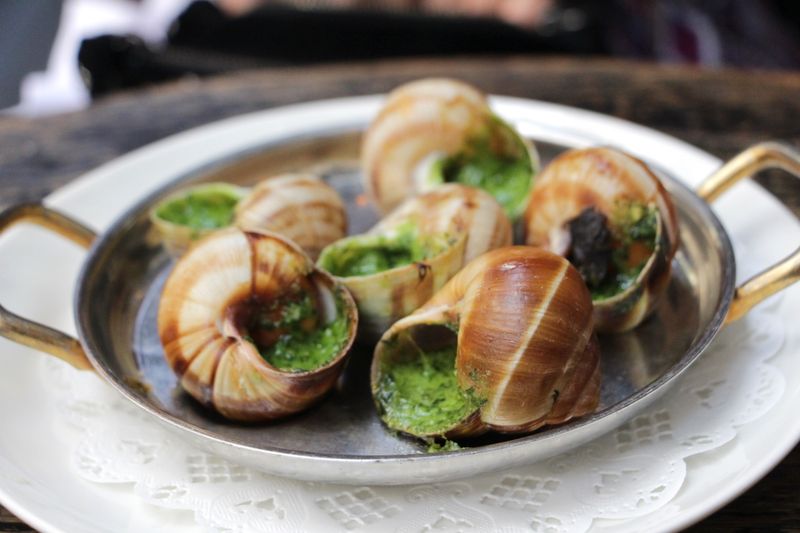
Escargot, or cooked snails, is a delicacy that epitomizes French gourmet cuisine. Served in a rich garlic butter sauce, these snails are tender and flavorful, offering a luxurious taste experience.
Commonly found in Parisian bistros, escargot is often enjoyed with crusty bread to soak up the savory sauce. The dish showcases the French ability to elevate simple ingredients to culinary excellence.
While it may seem unusual to some, escargot is a testament to the adventurous spirit of food lovers and a must-try for those seeking refined flavors.
Fugu

Fugu, the pufferfish, is a Japanese delicacy renowned for its potentially lethal nature if not prepared correctly. Only certified chefs are allowed to prepare this dish, ensuring its safety.
The fish’s delicate, subtle flavor and unique texture have captivated adventurous eaters worldwide. Served as sashimi, it provides a thrilling experience due to the careful preparation required.
Fugu showcases the artistry and precision of Japanese cuisine, offering a taste that is both exquisite and daring. For those seeking a culinary thrill, fugu is an unforgettable choice.
Kopi Luwak

Kopi Luwak, or civet coffee, is one of the world’s most expensive and unique brews. Made from beans digested by the civet cat, it offers an unparalleled flavor profile.
The beans are collected from the animal’s feces, cleaned, and roasted to create a rich, smooth coffee. The fermentation process during digestion adds depth to its taste.
Originating from Indonesia, this luxurious beverage is sought after by coffee enthusiasts eager to try something rare. It’s an intriguing exploration of how nature and craftsmanship combine to produce one of the finest cups of coffee.
Haggis
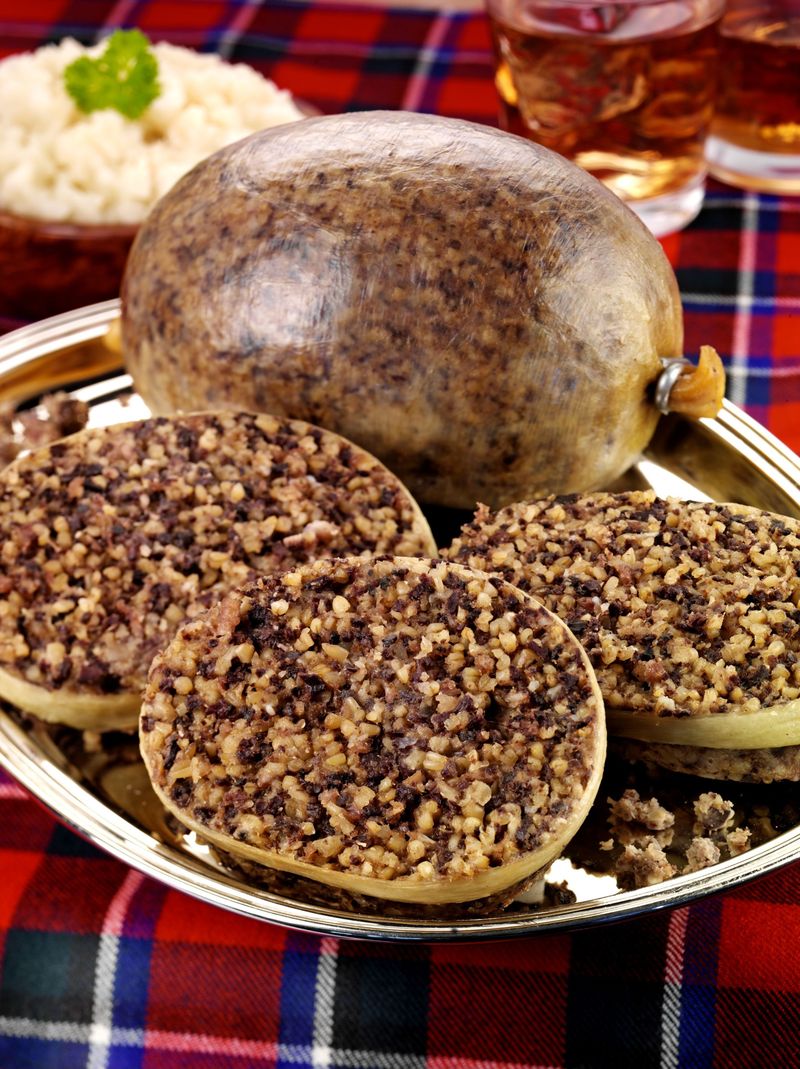
Haggis is Scotland’s national dish, celebrated for its robust flavors and hearty ingredients. Made from sheep’s heart, liver, and lungs, it’s mixed with onions, oatmeal, and spices, encased in a sheep’s stomach.
Despite its unusual components, haggis is cherished for its savory taste and historic cultural significance. Often served with neeps and tatties (turnips and potatoes), it’s a staple at Burns Night suppers.
This dish is a proud symbol of Scottish culinary tradition, perfect for those eager to experience authentic flavors from the Highlands. A meal rich in history and taste!
Rocky Mountain Oysters

Rocky Mountain oysters are a uniquely American dish that might surprise the uninitiated. Despite the name, they are not oysters at all, but rather deep-fried bull testicles.
This dish is a staple at festivals and ranch gatherings in the American West, especially Colorado. Known for their tender texture and mild flavor, they’re often served with a tangy dipping sauce.
Rocky Mountain oysters offer a taste of Western cowboy culture, perfect for adventurous eaters looking to try something out of the ordinary. An unexpectedly delightful dish that defies its reputation!
Natto

Natto is a traditional Japanese dish made from fermented soybeans. Its distinct, sticky texture and strong aroma can be challenging for some, yet it’s a beloved breakfast staple in Japan.
Rich in protein and probiotics, natto is often enjoyed over rice, with soy sauce and mustard. Its unique flavor is slightly nutty, with a hint of earthiness.
Celebrated for its health benefits, natto is a testament to Japan’s innovative culinary culture. It’s an adventurous choice for those interested in exploring new textures and ancient food traditions.
Fried Tarantulas
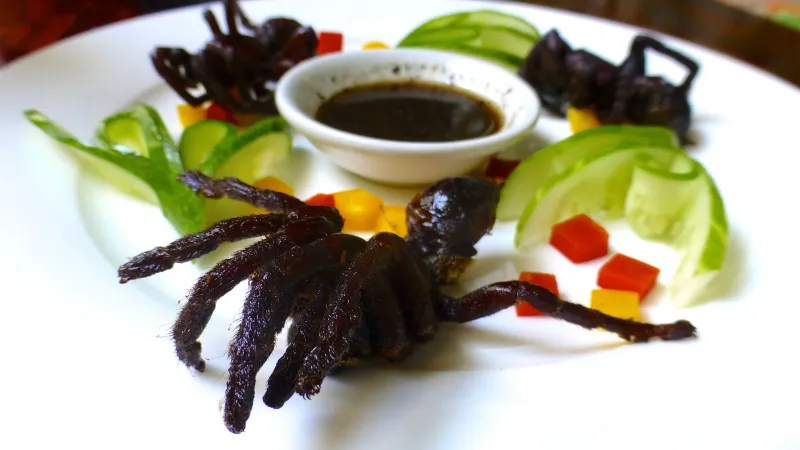
Fried tarantulas are a Cambodian street food that challenges perceptions of what is edible. Once a survival food during hard times, they are now a sought-after delicacy.
These spiders are deep-fried until crispy and seasoned with salt and garlic, offering a unique texture and taste reminiscent of soft-shell crab.
Popular in the town of Skuon, they reflect Cambodia’s resourceful culinary traditions. For the adventurous eater, fried tarantulas provide a thrilling taste experience and a story to tell.
Casu Marzu

Casu Marzu is a Sardinian cheese famous for its unusual maturation process involving live insect larvae. This cheese is illegal in many places due to its fermentation method.
The larvae, which help break down the cheese fats, create a soft, creamy texture and a strong, tangy flavor. Some connoisseurs enjoy it with the larvae still inside.
Celebrated in Sardinia as a traditional delicacy, casu marzu is a daring taste adventure. It’s a unique example of how regional heritage influences culinary practices.
Surströmming
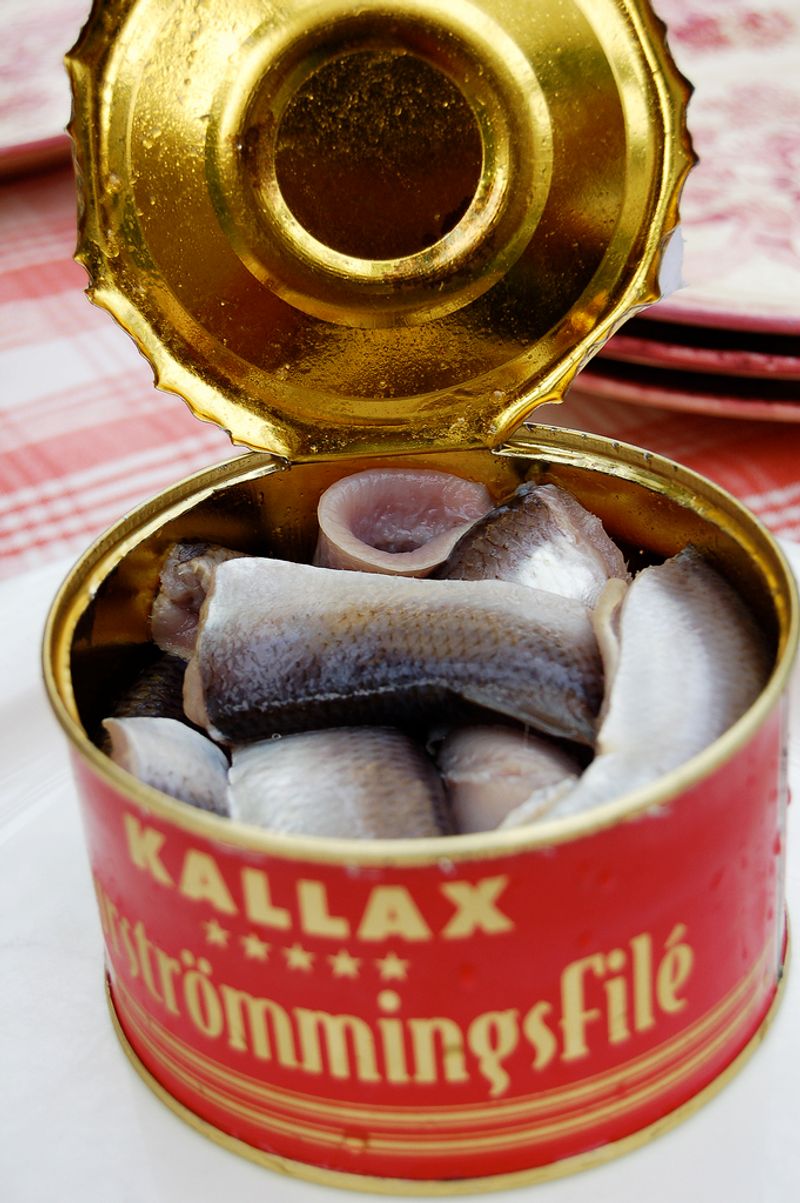
Surströmming, a fermented Baltic herring from Sweden, is famous for its overpowering smell that can be sensed long before the can is opened.
This fish is fermented for months, resulting in a pungent, tangy flavor that is traditionally enjoyed with flatbread, potatoes, and onions.
Considered a must-try for culinary thrill-seekers, surströmming is a testament to Sweden’s preservation techniques and daring taste preferences. It’s a dish that offers a memorable sensory experience for those willing to brave its aroma.
Lutefisk
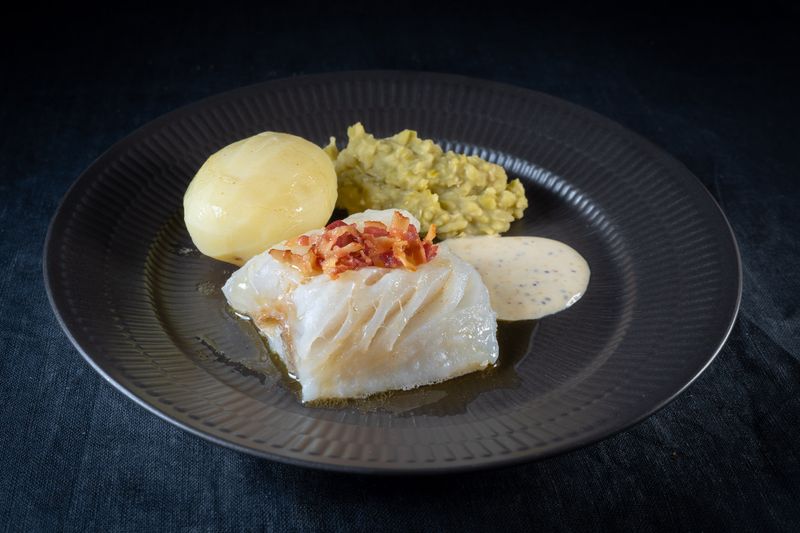
Lutefisk is a Norwegian dish with a unique preparation process involving dried fish rehydrated in lye. This results in a gelatinous texture that is both intriguing and flavorful.
Traditionally served during Christmas, it’s accompanied by boiled potatoes, peas, and bacon. Lutefisk’s mild taste is often enhanced with butter or cream sauce.
Steeped in Scandinavian heritage, lutefisk is a dish for the adventurous eater looking to explore traditional Nordic flavors. A culinary experience that combines history, culture, and taste.
Ant Egg Soup
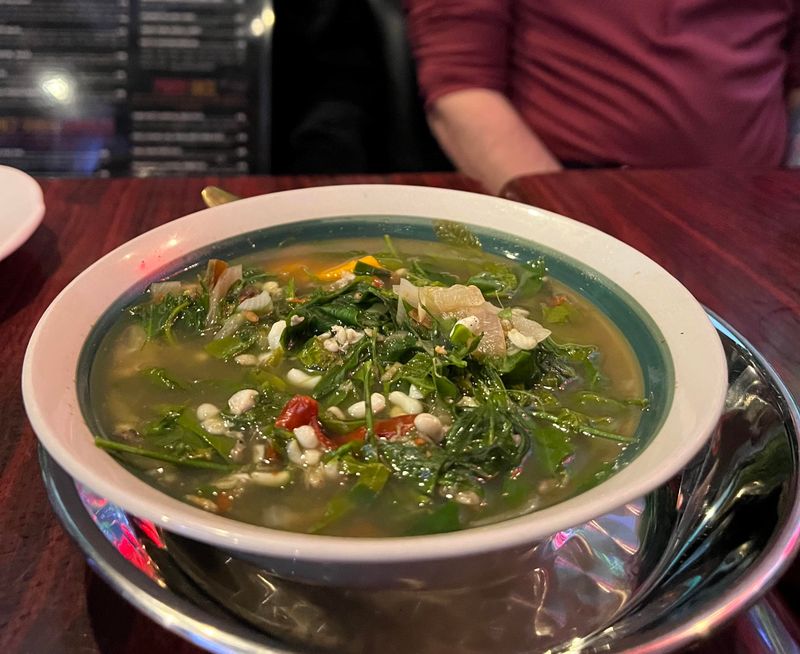
Ant egg soup, a Thai delicacy, offers a unique combination of flavors and textures. The soup includes white ant eggs, vegetables, and herbs, creating a tangy, slightly sour taste.
Popular in rural areas, it’s celebrated for its nutrient-rich ingredients and is often enjoyed with sticky rice. The eggs add a creamy texture that complements the broth.
This dish is a testament to Thailand’s inventive use of local resources and offers a bold taste experience for those curious about regional delicacies. An exotic culinary adventure awaits!
Criadillas

Criadillas, or bull testicles, are a traditional dish in Argentina known for their tender texture and mild flavor. Grilled or fried, they are often accompanied by chimichurri sauce.
This dish reflects the Argentine love for offal and is commonly enjoyed at asados, or barbecues. The preparation highlights the country’s culinary creativity.
For those adventurous enough to try something different, criadillas offer a taste of authentic Argentine cuisine and a unique culinary experience. A daring choice that delights the palate!
Fermented Herring

Fermented herring, or “silli” in Finland, is a tangy, salty delicacy enjoyed by those with a taste for bold flavors. The fish is fermented and served with onions and dill.
This dish is a staple in Finnish cuisine and often appears at festive occasions. Its robust taste is both challenging and rewarding.
For the adventurous foodie, fermented herring offers a taste of Nordic culinary tradition and a distinctive dining experience. A bold choice for those seeking flavors beyond the ordinary!
Kimchi

Kimchi, a staple in Korean cuisine, is renowned for its spicy, tangy flavor and health benefits. Made from fermented vegetables like cabbage and radishes, it’s seasoned with chili, garlic, and ginger.
This dish is a testament to Korea’s rich culinary heritage, offering a combination of heat and umami that delights the palate. Often enjoyed as a side dish, it’s also used in various Korean recipes.
Kimchi is a versatile and flavorful addition to any meal, perfect for those passionate about exploring global flavors and fermentation techniques.
Blood Sausage

Blood sausage, also known as black pudding in Ireland, is a hearty dish made from animal blood mixed with fat and cereal. Its rich, savory flavor is a beloved part of Irish breakfasts.
Served with mashed potatoes and parsley, it offers a comforting taste that’s both nostalgic and satisfying. Its unique preparation reflects Ireland’s resourceful culinary traditions.
For those curious about traditional Irish fare, blood sausage provides a taste of history and a filling meal. A dish that warms both the heart and stomach!
Pickled Herring
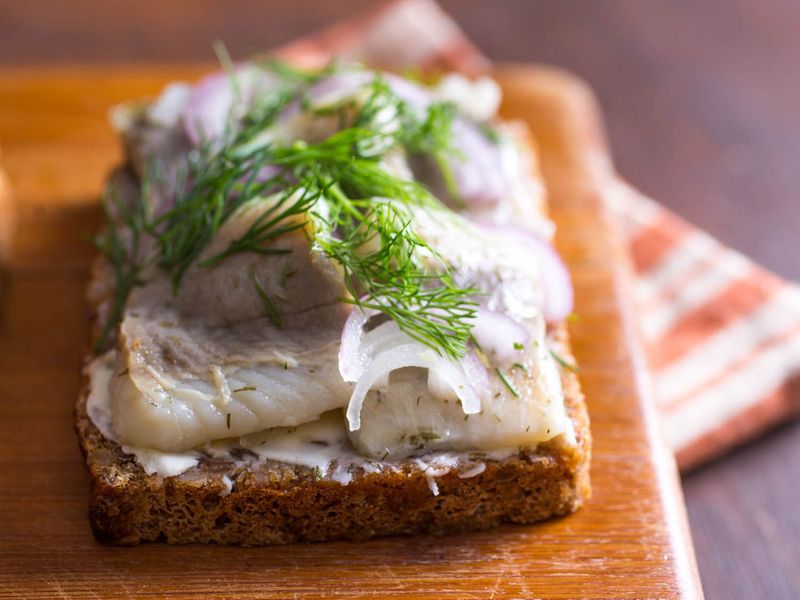
Pickled herring is a traditional Scandinavian delicacy that captivates with its tangy flavor and tender texture. Marinated in vinegar, sugar, and spices, it’s often served with onions and dill.
This dish is a staple at holiday feasts and smorgasbords, offering a taste of Nordic culinary heritage. Its refreshing taste pairs well with rye bread or boiled potatoes.
For those eager to explore Scandinavian cuisine, pickled herring is a must-try, providing a delightful combination of sweet, sour, and savory flavors.
Fried Crickets
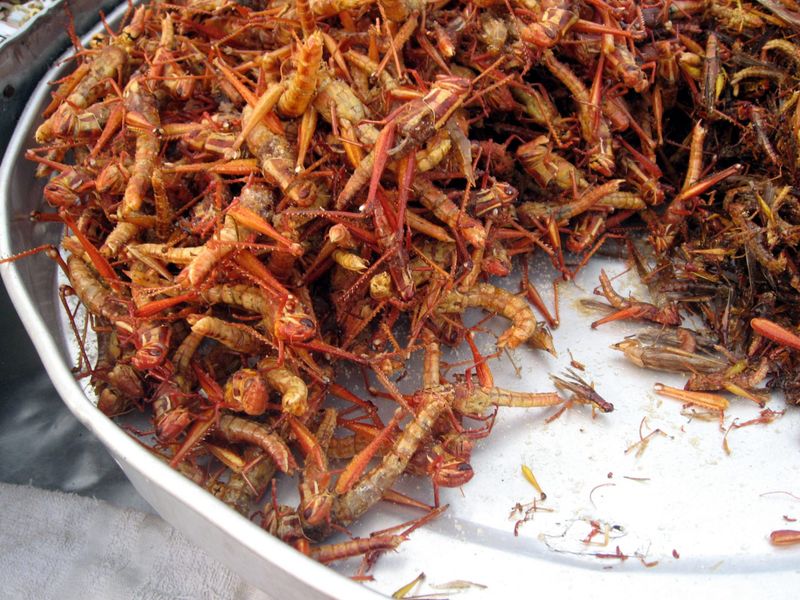
Fried crickets are a popular snack in Thailand, offering a crunchy texture and a nutty flavor. Seasoned with lime and chili powder, they provide a zesty kick.
Commonly sold at street markets, these insects are a sustainable protein source and a testament to Thailand’s adventurous culinary spirit. They’re often enjoyed with a cold beer.
Fried crickets offer a bold taste experience for the curious eater, providing a glimpse into local street food culture. A crunchy delight that surprises and satisfies!
Vegemite

Vegemite is an iconic Australian spread that intrigues with its potent, savory flavor. Made from brewer’s yeast extract, it offers a rich umami taste that’s both salty and slightly bitter.
A staple in Australian households, Vegemite is often spread thinly on buttered toast. Despite its strong flavor, it’s beloved by many for its nostalgic comfort and nutritional benefits.
Vegemite is a must-try for those curious about Australian cuisine, providing a taste that’s uniquely bold and surprisingly addictive. A breakfast choice that embodies Australian culinary culture!
Leave a comment